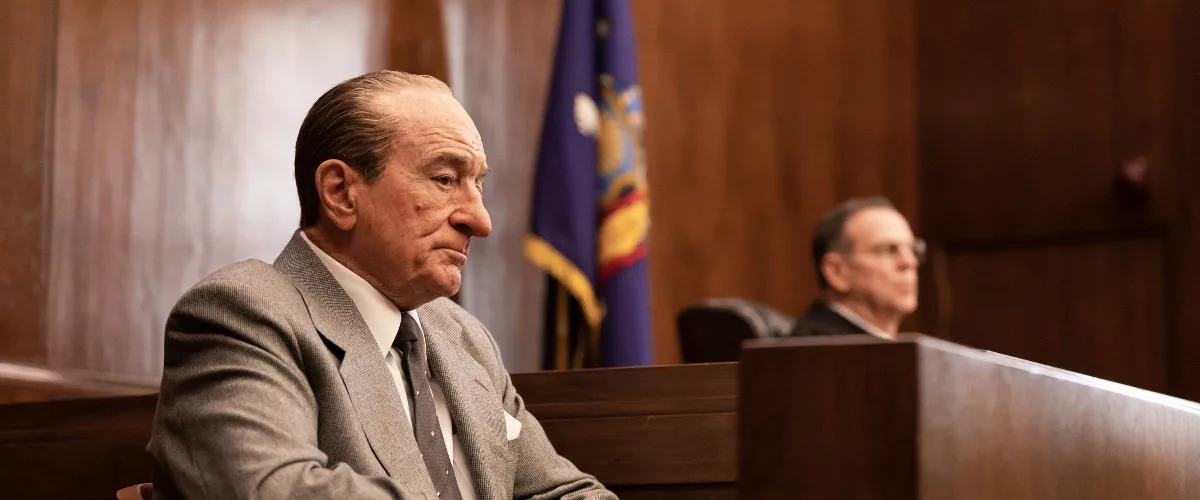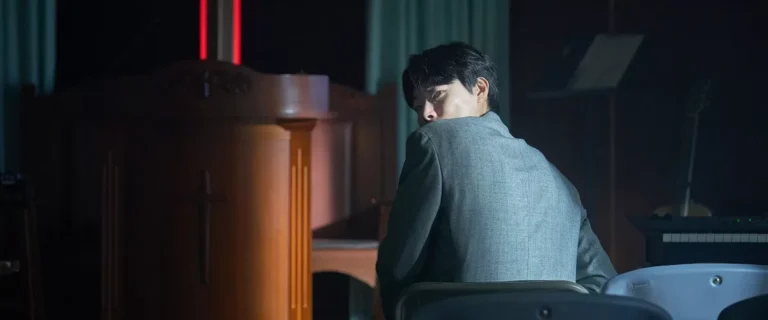The Alto Knights
It’s 1957, and mobster Frank Costello (Robert De Niro) exits out of a yellow cab and struts into a New York City highrise. As he waits for an elevator, his sleek grey suit and matching fedora catch one’s eye against the walnut interior of this building’s refined lobby. A canted angle of Castello’s reflection in double mirror panes gives an early visual wink to the twoness that’ll dominate Barry Levinson’s historical mob drama “The Alto Knights.” Levinson drills down on that duality when the mirror cracks from an assassin’s bullet, dispatched by Costello’s rival Vito Genovese (De Niro), suddenly whizzes past Costello’s head and makes impact.
De Niro has played the role of the level-headed gangster many times before, but the prospect of playing dueling characters in Levinson’s film was probably too much for the actor to resist. Despite the alluring premise, nothing in Levinson’s predictable and all-too-familiar films offers anything that feels particularly new. And while one could argue that we shouldn’t be expecting innovation from the now journeyman filmmaker—who’s fallen hard from his “Wag the Dog” heyday—and his venerated actor, the unimaginative rendering of “The Alto Knights” plays less like an ode to a genre than a wheezing retread.
Because let’s think about “The Alto Knights” in the context of De Niro’s career. This isn’t the immersion into the world of a fast-moving way of life like “Goodfellas.” It’s not the canvassing of a neighborhood like “A Bronx Tale.” Nor is it an anguished reflection on one’s crimes like “The Irishman.” Instead, Levinson frames his film closer to the spirit of “Casino,” wherein two longtime friends become enemies in the face of a changing landscape. Without the focus, soulfulness, and manic spirit Joe Pesci often provides in hotheaded roles, Levinson’s take is nothing more than an over-mannered slog.
In “The Alto Knights,” written by “Goodfellas” scribe Nicholas Pileggi, De Niro is Costello, the silent head of the Luciano crime family. If you’re well-versed in mob history, you already know plenty about Costello. Still, for the less informed, Levinson gives viewers some historical background on Costello by way of documentary-style filmmaking. De Niro, as Costello, narrates much of the film, with Levinson often cutting to Costello as a kind of talking head being interviewed about his past while he flips through black and white stills on a personal slide projector. Costello recounts how he rose through the ranks as a bootlegger before transitioning into becoming a political kingmaker through Tammany Hall. His best friend during this journey, the ruthless crime boss Vito Genovese, remained in the picture until he fled to Italy in 1937 to avoid a murder conviction. After eight years on the lam, he has returned to America to reclaim his power.


